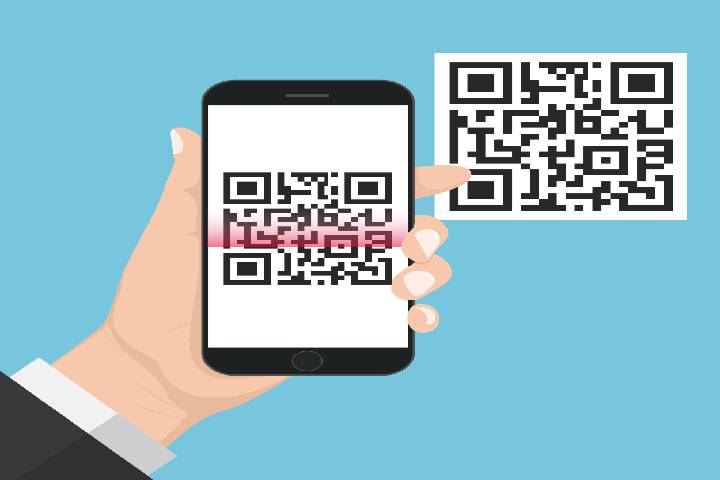Types Of 2 Dimensional Barcode Uses
Two-dimensional barcodes are used to systematically represent data by using symbols and shapes to encode data. The two-dimensional Quick Response Code, known as QR code, is used similarly to the linear 1D barcode but they present even more data per unit area allowing them to be used for plenty more.
Businesses dictate what information will be defined and provided on their 2D labels. A business uses custom fields to create what data will be provided on each label.

QR codes are used to track, manage, market, and buy items. They are implemented in advertisements, magazines, and business cards. QR codes are commonly used in the retail space for POS transactions and in the entertainment space for advertising & marketing.
2D barcodes are flexible in their size and appearance. Unlike the vertical barcode, 2-dimensional barcodes can’t be read with a 1D laser scanner and pose a higher fault tolerance.
QR Code Software Solutions
Shipment & logistic Tracking
One of the primary usages of a 2D barcode is asset tracking. Scanning capabilities enable the geolocation of assets during transportation. QR barcodes houses all of the digital assets data used to locate, pick up and deliver shipments.
Businesses can scan codes and check goods in and out of hubs within their company’s network to ensure arrival and delivery. Using asset tracking also enables a business to customize parameters for their database. A QR code generator tool can layout and print labels using integrated software from handheld or desktop printers.
Inventory & Warehouse Management
The 2D barcode provides businesses with an inventory management solution. QR barcodes can efficiently locate and itemize inventory levels with a single scan. As a result, businesses can ensure that they have updated records of items in stock and those that need replenishment.
Quick response codes help with inventory management by providing where goods are located within a warehouse. QR code labels help distribute information that can include who manufacturers might be and/or all of the necessary details such as size, category, price and expiration dates. Warehouses provide any type of information on a 2D label. Once an item has a QR code label generated the information can be updated on the company’s database.
Inventory tagging is not limited to the goods stored within a warehouse, QR codes provide additional inventory management in the field. 2D labels placed on assets help to manage fixed objects as well as mobile inventory in the field. Companies will be able to access information at any time and on mobile devices with a simple scan.
QR Code Payment
Businesses that are looking to streamline their retail POS operations should consider QR code implementation for mobile payments. The 2D labels allow POS transactions to transfer funds electronically in real-time.
Mobile payments using QR codes allow businesses to deposit funds faster and eliminate processing fees often associated with card transactions making 2D barcodes an economically smarter choice. The codes provide flexibility to be placed anywhere such as billing invoices and at checkout counters.
The mobile “scan and pay” technology is available to both parties involved in the transactions. Customers can present the 2D barcode technology to any retailer when buying a product at the POS. The retailer, in turn, would scan the QR code presented from the consumer’s mobile device to process mobile payments immediately. This gives consumers the freedom to process POS transactions at any location from their mobile device.
Marketing User Incentive
2-dimensional barcodes are used by promotions and marketing industry professionals to monitor and gauge user incentives. The data captured from each scan provides industry professionals with a better understanding of their target audience.
Quick response codes can also be used to link and optimize websites. As a result, a business use barcodes to provide contact information, market their products and monitor customer behaviour using the code management systems.
Integrating QR codes allows a customer to scan a barcode and gain advertisement information. Businesses track the basic data such as the number of scans a code has generated, the amount of incentive redeemed using the barcode, and even the items that the incentive was applied towards. Businesses are able to keep track of advertising campaigns and their results.
Management Services With QR Code Integration
A QR barcode could help warehouses track and store their Inventory, it will retrieve a customer’s payment information to complete a sale, QR codes help execute marketing user campaign strategies, and determine which units are to be shipped to customers with logistics. Providing businesses with QR code integration for management services is invaluable.
Companies with dated barcode platforms are interested in modifying their software technology to include QR code technology. The upgrade would require tailored software customizations for software applications. Software systems need to be synch with QR code readers for data capture.
The implementation of QR code scanning technology must be able to generate QR code labels within specified parameters when scanned. The technology is flexible while it’s content-heavy. When scanned a single label can mine, store and provide analytical data to be accessed on software dashboards.
QR code management solutions require a level of experience to ensure seamless integration for dynamic software development. The software development for labels sometimes requires compliance standards depending upon the industry.
Developers at Chetu create a variety of management systems that use Quick Response software configuration for both accuracy and quality assurance. The latest trends in QR labels allow businesses to 2-D barcodes for most of their labelling solutions.
Tech Trends
Related posts
Leave a Reply Cancel reply
Hot Topics
Categories
- Ads (5)
- Animes (25)
- Artificial Intelligence (AI) (35)
- Augmented Reality (AR) (10)
- Automotive (9)
- Bitcoin (16)
- Blockchain (24)
- Business (244)
- Business Intelligence (3)
- Cloud Computing (23)
- Computer (128)
- Concrete Technology (1)
- Cryptocurrency (10)
- Cybersecurity (42)
- Data Science (9)
- Database (4)
- DevOps (6)
- Digital Marketing (76)
- Digital Workplace (14)
- Ecommerce (1)
- Education (28)
- Electric Vehicle (EV) (1)
- Electronics & Hardware (17)
- Entertainment (42)
- Fabrication (3)
- FAQ's (1)
- Finance & Marketing (47)
- Gadgets (35)
- Games (8)
- Gear (29)
- HTTPS (1)
- Industry (46)
- Information Technology (90)
- Internet (413)
- Internet of Things (IoT) (41)
- Job (25)
- Machine Learning (6)
- Marketing (92)
- Mobile Apps (21)
- Movies (11)
- Natural Language Processing (6)
- News & Trends (109)
- Programming (4)
- Science & Technology (235)
- Security (81)
- SEO (56)
- Services (36)
- Social Media (73)
- Software (99)
- Sports (1)
- Technology (306)
- Telecom (6)
- TikTok (5)
- Tours & Travels (9)
- Uncategorized (11)
- Virtual Reality (VR) (7)
- VoIP (4)
- Web Technology (42)
- Workforce (17)
- Workspace (6)

![5 Clever Ways To Use 2D Barcodes [2021]](https://www.technologynewsntrends.com/wp-content/uploads/2019/09/5-CLEVER-WAYS-TO-USE-2D-BARCODES.jpg)

Stay connected